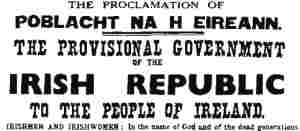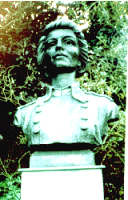
National Museum of Ireland
Cumann na mBan was not formally consulted about the plans for the Easter Rising but many members suspected there was a rebellion in the offing when they were ordered to make up medical kits for a 'route march' the week before. Neither were they mobilised for the Rising, but about 180 women from Cumann na mBan and the Irish Citizen Army turned up for duty, representing more than ten per cent of those involved in the Rising: a high proportion, considering the chaos caused by conflicting orders and the attitude of the Volunteers, the IRB and society in general, to the role of women at the time.
They soon found work, carrying despatches to rural areas, trying to sort out the confusion caused by orders and countermanding orders. Nora Connolly travelled from Belfast to Dublin and back up north again.
Other women were also sent out - Máire Perolz to Cork, to make contact with Tomás MacCurtain, Eily O'Hanrahan to Enniscorthy, Nancy Wyse Power to Borris, and others to Dundalk, Tralee and Waterford - in a desperate attempt to mobilise the countryside. They were of course chosen because they had a greater chance of travelling freely than the men, but the anxious and disappointed women who carried out these often futile missions were taking risks, and they knew it.The Proclamation of the Republic read by Patrick Pearse at the GPO began by addressing 'Irishmen and Irishwomen'. It referred to Ireland as 'she', declared that 'The Irish Republic ... claims the allegiance of every Irishman and Irishwoman' and guaranteed 'religious and civil liberty, equal rights and equal opportunities to all its citizens ...' It promised a permanent national government 'elected by the suffrages of all her men and women.'

![]()
National Museum of Ireland
Cumann na mBan members were turned away at first when they approached several Dublin garrisons but allowed access later, on appeal to Patrick Pearse, Thomas Clarke and James Connolly at the GPO. They did not take part in the fighting but carried despatches and organised food supplies, cooking, and first aid. Éamon De Valera at Boland's Mill was the only leader who refused absolutely to have women at his post.
|
Women of the Irish Citizen Army on the other hand were organised at the start and their Ambulance Corps assembled and marched with the men. Kathleen Lynn, doctor and medical officer of the Irish Citizen Army, arranged medical assistance and courageously tended the wounded. A small group of women and men took part in the failed attack on Dublin Castle and the occupation of nearby City Hall. It was Kathleen Lynn, as the most senior officer present at the time, who offered the surrender of this post to a surprised British officer. Constance Markievicz, also an officer in the Irish Citizen Army was appointed second-in-command at the St. Stephen's Green garrison where women took part in the fighting. |
 Constance Markievicz As represented by sculptor Seamus Murphy in St Stephen's Green. |